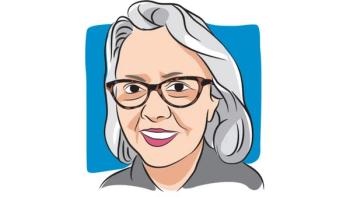
Collection of Family Cancer History Is Suboptimal, Highlighting Need for Patient Reporting
In assessing the quality of family cancer history entered into electronic health records, researchers found that such reporting was suboptimal – highlighting the need to optimize online collection with a provider-free approach.
In assessing the quality of
“The biggest gap is in capturing the age of diagnosis for the family members who are affected by cancer,” explained Dr.
While family history is one of the key indicators of hereditary cancers — such as colorectal, endometrial, stomach, breast, ovarian, intestinal, pancreatic, prostate, urinary tract,
“When you really look at the utility of family cancer history, it is to run a risk assessment to see if genetic testing or genetic referral is required for the patient,” Pande said. “If you don't have a complete family history, it's not possible to run an accurate risk assessment. It really makes it important to have a good family history captured in the electronic health record.”
Therefore, she and her colleagues evaluated the quality of family cancer history as entered by the patient into the electronic health record to determine its competency in determining Lynch Syndrome risk assessment.
“We basically wanted to really take on this project to be able to increase ascertainment of these high-risk cases,” Pande said. “With that in mind, family history speaks to the fact that people may be at high risk if they have more than one family member affected in their family.”
Family cancer history was self-reported by all new patients, from September 2016 to August 2017, using an online, patient-facing, custom created questionnaire sent days ahead of their appointments. The questionnaire was then reviewed and/or updated by a clinic nurse during the first physician visit. Last, the results were imported into the electronic health record’s review of systems.
The researchers determined the quality of family cancer history attainment by calculating the rates of three reported variables (first/second degree of kinship, cancer site/type and age at diagnosis) required for PREMM5 (PREdiction Model for gene Mutations), a risk-prediction model for Lynch Syndrome.
Of 47,647 new patients, 47.5% reported with family cancer history in one or more relatives — including 46.1% who were first degree, 64.8% who were second degree, 3.0% considered other and 2.4% that were missing. When evaluating the status of family history in the electronic health record in this group, 42.2% reported their relative’s specific cancer and 10.3% with their age at diagnosis – leading to 9.9% of patients who were evaluable for Lynch Syndrome with PREMM5.
When evaluating the three elements of family cancer history for evaluation by PREMM5, family history was reported in 97.6%, a cancer type/site was specified for 88.8% reporting family cancer history, and age at diagnosis was listed for 21.7% of their relatives’ cancers. In total, only 20.9% of patients reported with a family history, the specific cancer type/site and age at diagnosis. Moreover, fewer men (9.5%) than women (28.1%) provided all three family cancer history elements.
Lastly, 46.7% of patients with breast cancer, 21.9% of patients with gastrointestinal cancer, 47.2% of those seen for cancer prevention screening and 23.1% of patients undergoing an endoscopy reported all three elements; however, the researchers observed lower rates for the other cancer types.
The researchers noted that these results underscore the need to optimize patient-facing reporting of family cancer history using online tools for an automated risk-assessment that removes the providers’ collection of information, adding that this approach may also include patient education and electronic health record prompts for family history completion.
“The best person to report on the family history is the patient themselves. If they can do it in advance, then they are more likely to have more complete information and more complete details of their family history,” Pande said.




